Friday☕️

Economics & Markets:
- Today’s U.S. stock market:
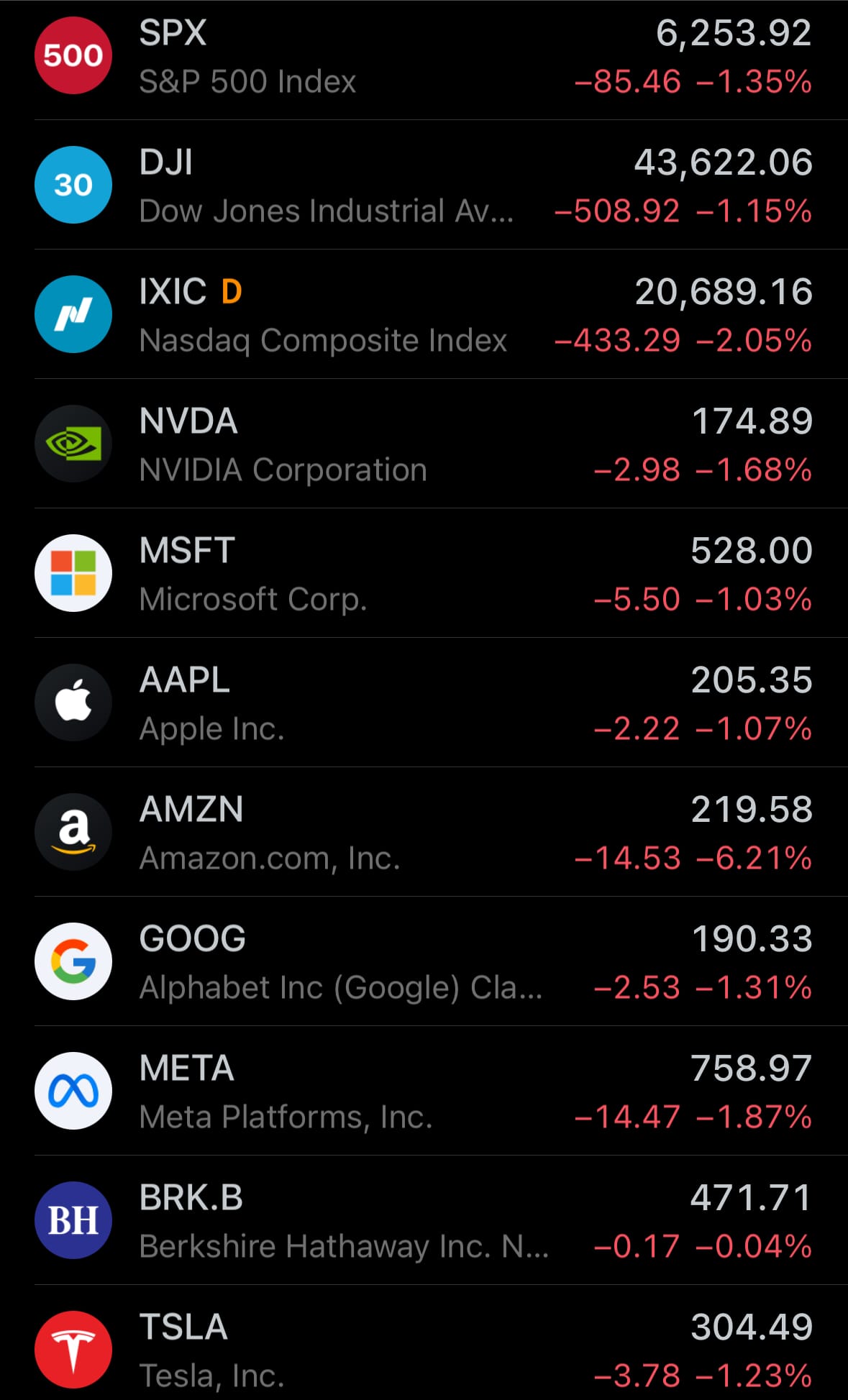
- Yesterday’s comm market:

- Yesterday’s crypto market:

Geopolitics & Military Activity:
- Yesterday, July 31, 2025, Israeli airstrikes targeted several Hezbollah sites in Lebanon's Beqaa Valley and southern areas, focusing on facilities used for precision missile manufacturing and underground storage of guided missiles. A key site near the village of Brital was hit, following intelligence reports of Hezbollah's efforts to repair and restore previously damaged infrastructure. The strikes involved multiple waves of fighter jets, affecting locations such as Nabi Chit, Brital, and Khardali, where explosions and secondary blasts were reported by various observers.
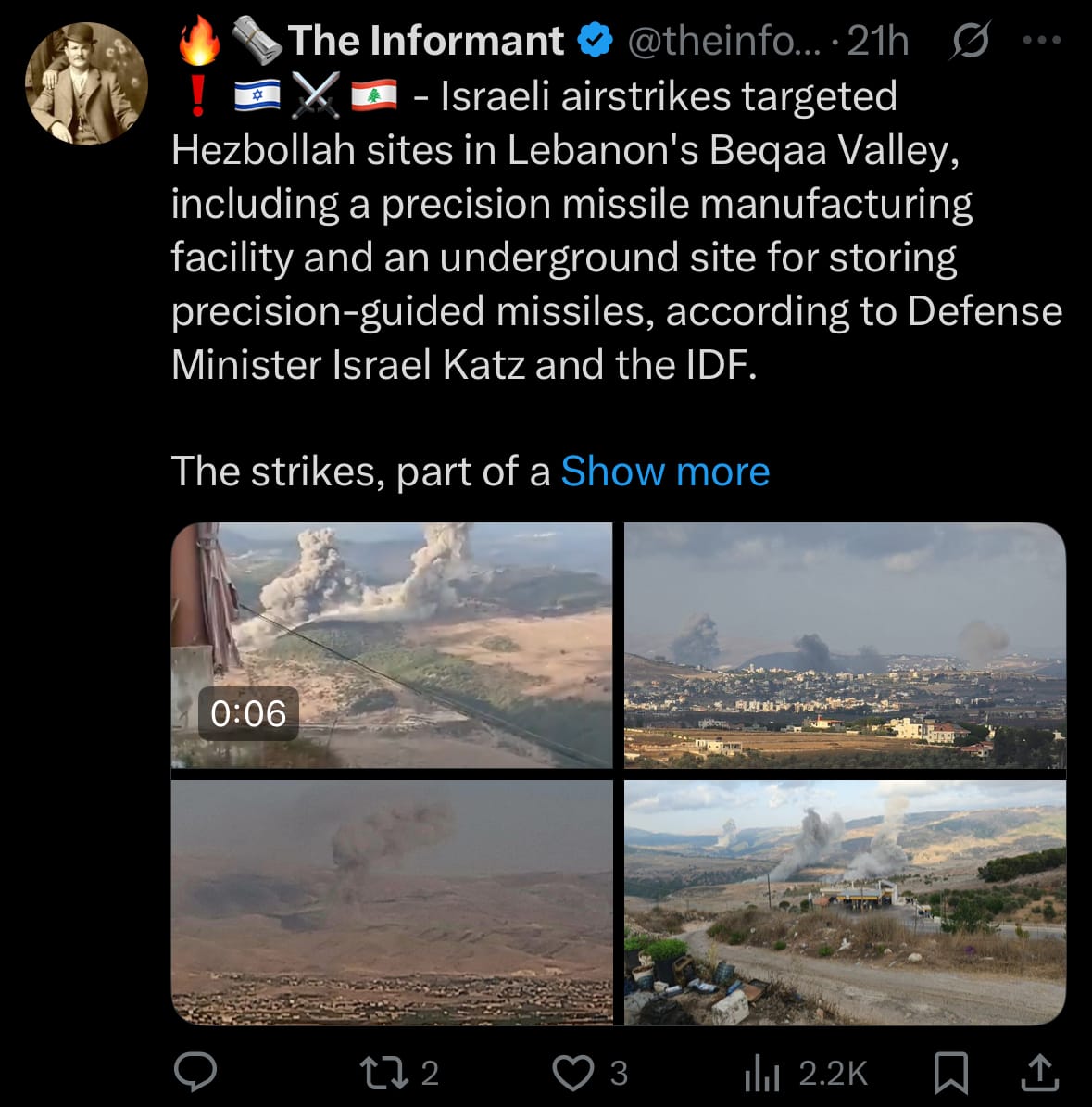
- Israeli Defense Minister Israel Katz indicated that the operations aimed to halt Hezbollah's rebuilding activities, warning that future attempts to threaten Israel would lead to decisive responses. The Israeli Defense Forces stated that Hezbollah's actions violated agreements between Israel and Lebanon, noting the targeted facility had been struck repeatedly since a November ceasefire. Lebanese sources reported four deaths resulting from the strikes, occurring amid heightened regional tensions, with local coverage describing damage to structures associated with military production and storage.
Environment & Weather:
- On August 1, 2025, heavy and continuous rainfall led to widespread flooding in Sông Mã commune, located in Son La province, Vietnam. The flooding occurred when the Mã River overflowed its banks. At 4:00 PM local time, the water level at Xã Là station was measured at 28,495 cm. This exceeded the Level III warning mark by 345 cm. The water levels were increasing slowly and might soon reach their highest point. In the center of the commune, streets were covered in muddy water up to chest height. Residents had to wade or swim to move around safely. Many buildings, such as homes and shops, were partly underwater, with items like goods floating in the debris. Aerial images showed large areas along the riverbanks flooded, turning neighborhoods into water-filled zones.

- This event is linked to broader flooding and weather issues in northern Vietnam. It has caused villages to become isolated, damaged roads and other infrastructure, and required evacuations in Son La province. At least six people have been reported dead or missing from flash floods and landslides. Hydropower plants are releasing water to control reservoir levels, which could raise flood risks further downstream. Local and national authorities are keeping a close watch on the situation as heavy rain continues.
Space:
- Yesterday, July 31, 2025, SpaceX conducted the Starlink Group 13-4 mission, launching from Space Launch Complex 4 East at Vandenberg Space Force Base in California. The Falcon 9 rocket took off around 11:35 a.m. Pacific Time, carrying 19 Starlink satellites into low-Earth orbit. These satellites aim to enhance the company's broadband internet network, focusing on improved coverage in remote areas.
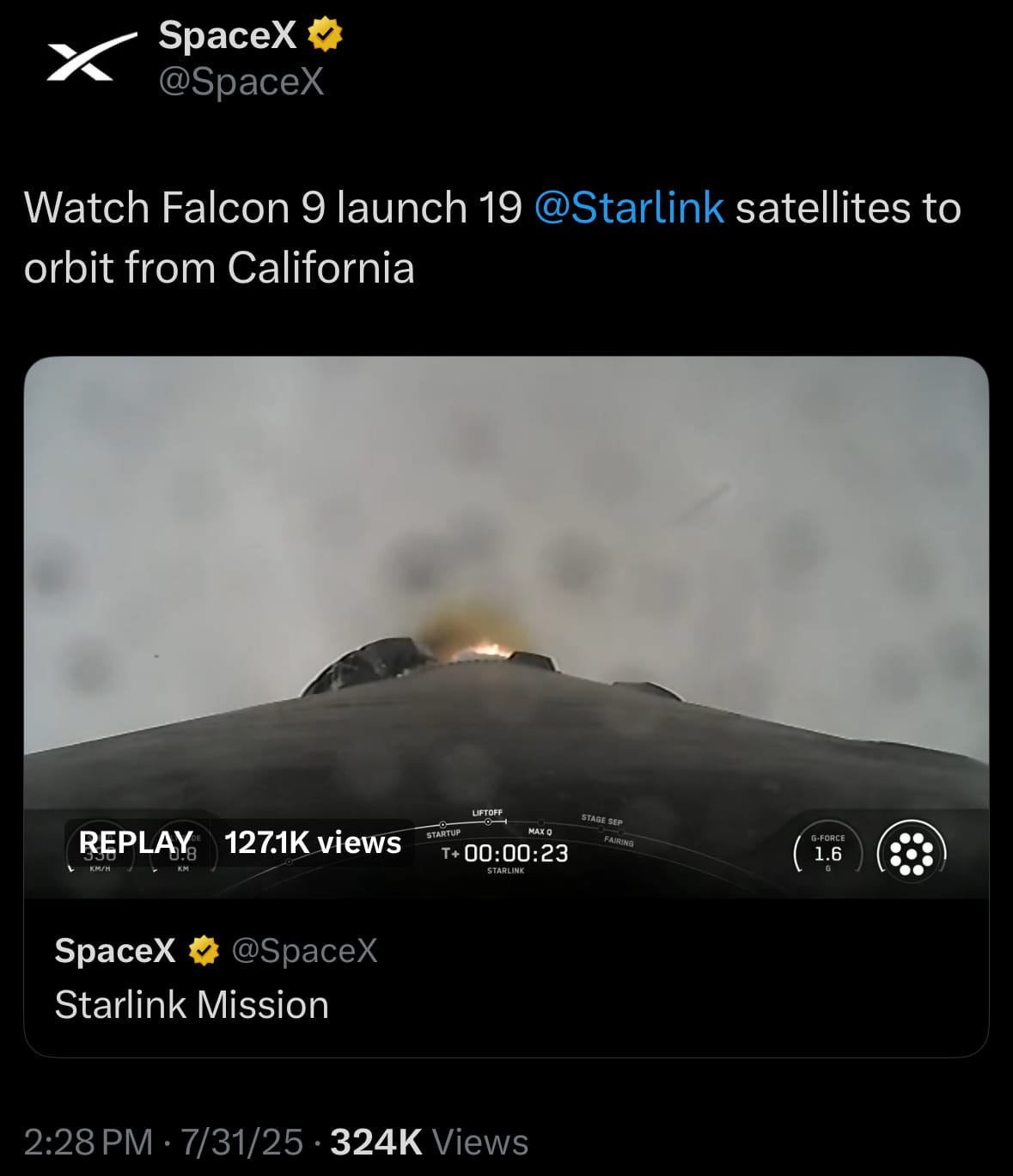
- The reusable first-stage booster, on its 27th flight, separated successfully and landed on a drone ship in the Pacific Ocean. While a technical issue disrupted the live video from the second stage, the satellite deployment occurred as planned, with all units reaching their target orbit.
- Today, August 1, 2025, SpaceX is scheduled to launch the Crew-11 mission from Launch Complex 39A at NASA's Kennedy Space Center in Florida. The Falcon 9 rocket is set to lift off at approximately 11:43 a.m. EDT (15:43 UTC), after a one-day postponement due to weather issues on July 31. This mission will transport four astronauts via the Crew Dragon spacecraft Endeavour, on its sixth flight, to the International Space Station under NASA's Commercial Crew Program. The crew will spend about six months on the station, performing experiments in fields such as biology, physics, and technology, while also handling maintenance and operational tasks. The spacecraft will enter a low Earth orbit at roughly 400 kilometers altitude with a 51.6-degree inclination, matching the ISS's path to facilitate rendezvous.
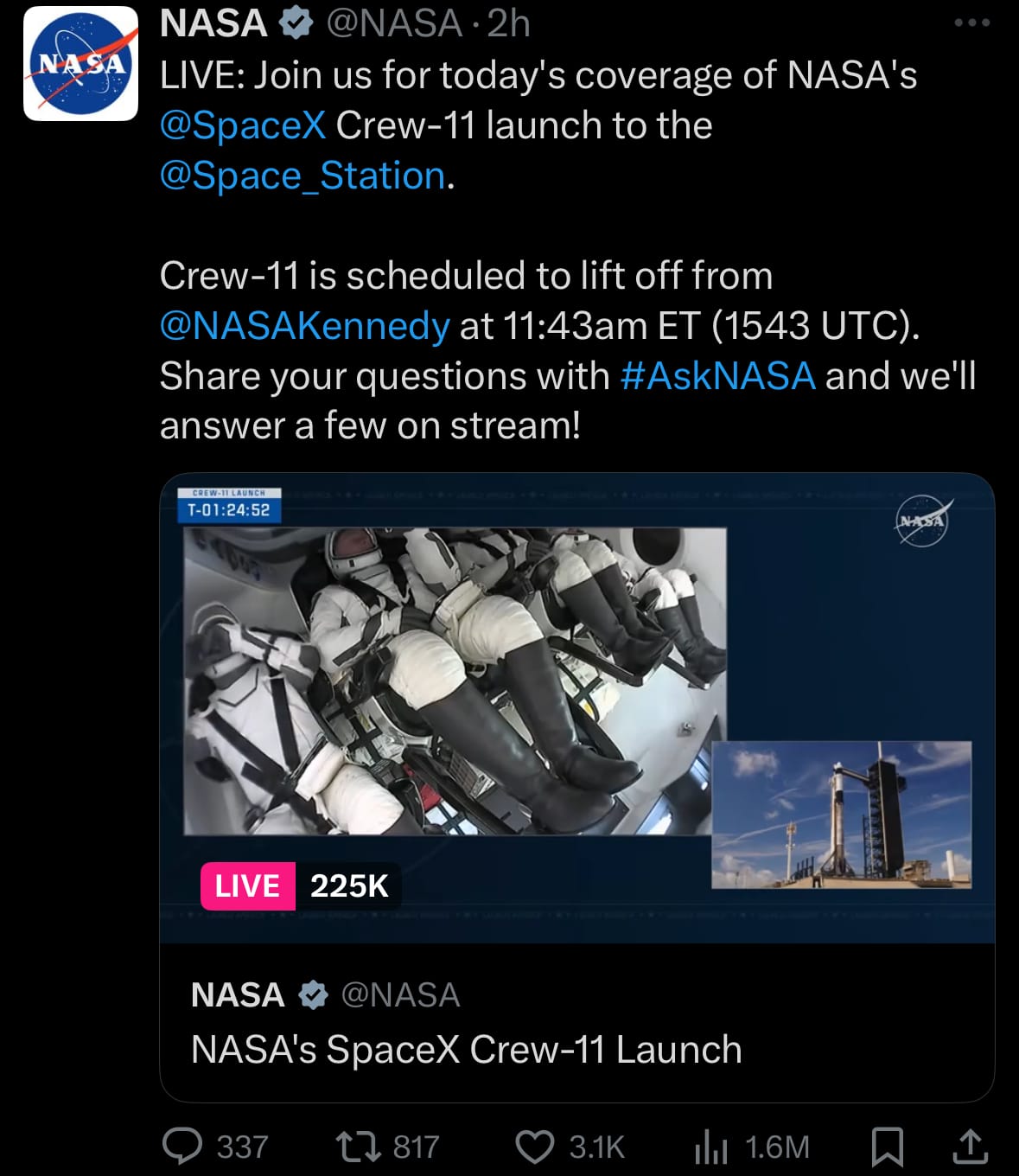
- Docking with the ISS is anticipated around 3 a.m. EDT on August 2, following automated orbital adjustments. The Falcon 9's reusable first-stage booster, previously flown on other missions, is expected to land on an autonomous drone ship in the Atlantic Ocean after separation. Pre-launch activities, including astronaut suit verifications and hatch closure, have been completed, though weather conditions could lead to additional delays. This launch supports ongoing crew rotations to the ISS.
Statistic:
- Largest assets on Earth by market capitalization:
- Gold: $22.819T
- 🇺🇸 NVIDIA: $4.189B
- 🇺🇸 Microsoft: $3.935T
- 🇺🇸 Apple: $3.085T
- 🇺🇸 Amazon: $2.317T
- Bitcoin: $2.293T
- 🇺🇸 Alphabet (Google): $2.287T
- Silver: $2.084T
- 🇺🇸 Meta Platforms: $1.885T
- 🇸🇦 Saudi Aramco: $1.566T
- 🇺🇸 Broadcom: $1.331T
- 🇹🇼 TSMC: $1.210T
- 🇺🇸 Berkshire Hathaway: $1.024T
- 🇺🇸 Tesla: $975.05B
- 🇺🇸 JPMorgan Chase: $785.92B
- 🇺🇸 Walmart: $783.35B
- 🇺🇸 Oracle: $683.41B
- 🇺🇸 Eli Lilly: $682.27B
- 🇺🇸 Visa: $662.69B
- 🇨🇳 Tencent: $614.19B
- SPDR S&P 500 ETF Trust: $570.30B
- 🇺🇸 Mastercard: $509.14B
- 🇺🇸 Netflix: $492.91B
- 🇺🇸 Exxon Mobil: $479.27B
- Ethereum: $438.51B
History:
- The history of remote control technology traces back to the late 19th and early 20th centuries, beginning with theoretical foundations laid by inventors like Nikola Tesla. In 1898, Tesla demonstrated a radio-controlled boat in Madison Square Garden, a revolutionary concept at the time. This early innovation set the stage for decades of experimentation in wireless communication and electromechanical systems. Throughout the mid-20th century, remote control technology began finding practical applications—first in military contexts such as radio-controlled bombs and drones during World War II, and later in consumer products like garage door openers and television remotes by the 1950s and 60s.
- As electronics miniaturized and radio frequency (RF) technology advanced, remote control systems evolved significantly. The 1980s and 90s saw a surge in remote-controlled hobbyist models—cars, boats, helicopters—driven by advances in integrated circuits and battery technology. The 21st century brought digital protocols, satellite-linked communications, and real-time telemetry into the mix, enabling highly precise and secure remote operation. Today, RC systems are integral across sectors: from space exploration and defense, where remotely piloted spacecraft, drones, and Mars rovers are controlled from vast distances, to homes, where smart remote systems now manage lighting, security, climate, and appliances. Modern remote control technology increasingly incorporates encrypted communication, AI-assisted automation, and integration with voice and app-based interfaces—transforming it from a simple convenience into a core enabler of both high-stakes missions and everyday life.
Image of the day:

Thanks for reading!
Earth is complicated, we make it simple.
Click image to view the Earth Intelligence System:
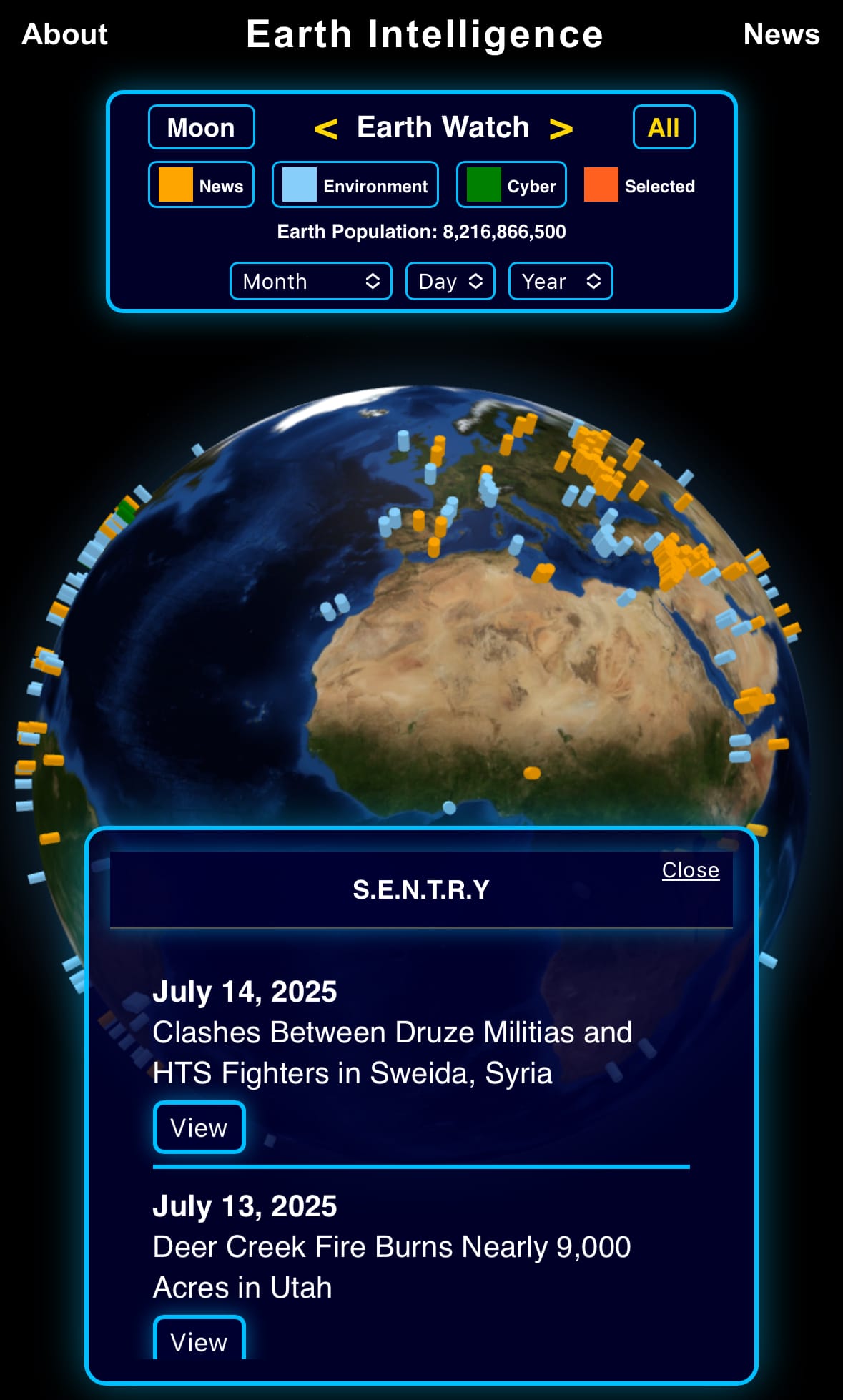


Support/Suggestions Email:
earthintelligence@earthintel.news




